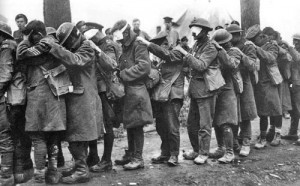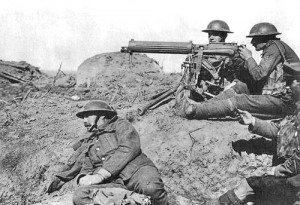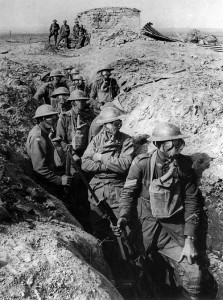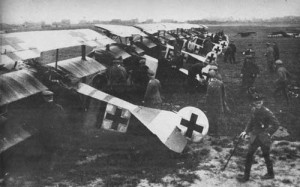
Line up of German Fokker DR1 fighter planes, made famous as being the type of airplane used by the “Red Baron”, German Ace Manfred von Richthofen, who was shot down and killed in 1918.
July 28, 2014 will be the 100th anniversary of the start of World War I, also called the “Great War”, which lasted from July 28, 1914 to November 11, 1918. World War I was one of the deadliest wars in history, an estimated nine million soldiers were killed; the total killed including civilians exceeded fifteen million, which was the minimum estimate. The aftermath of World War I saw Europe forever changed and the seeds for World War II planted.
World War I initially started when Austrian Archduke Franz Ferdinand and his wife Sophie were killed in the city of Sarajevo by a group of assassins from Serbia. Austria-Hungary declared war on Serbia, and a chain reaction followed, with many countries, either by treaty obligations or by choice declared war on one another. The war drew in all the world’s great economic powers, which were assembled in two opposing alliances; the Allies and the Central Powers.
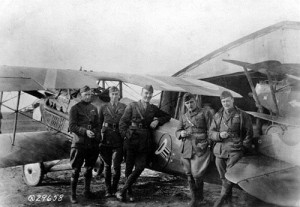
U.S. pilots standing in front of a French built SPAD S.XIII fighter plane, the center pilot is the United States most successful fighter ace in World War I; Eddie Rickenbacker.
The countries involved on the “Allied” side included France, Russia, Italy, Serbia, Montenegro, Romania, Belgium, Greece, Portugal, Japan, the United States, and the British Empire. The British Empire at the time included the United Kingdom, Australia, Canada, India, Newfoundland, New Zealand, and South Africa. The United States entered World War I on the Allied side in 1917, while Russia withdrew from the war by signing a peace treaty with Germany in 1917 after the Russian Revolution.
The “Central Powers” consisted of the countries of Germany, Austria-Hungary, Bulgaria, and the Ottoman Empire. Austria-Hungary consisted of modern day Austria, Bosnia, Herzegovina, Croatia, Czech Republic, Hungary, Montenegro, Poland, Romania, Slovakia, Slovenia, and the Ukraine. The Ottoman Empire consisted of modern day Turkey, Israel, Syria, Jordan, and other parts of the Middle East and Africa.
Ultimately, more than 70 million military personnel, including 60 million Europeans, were mobilized in one of the largest wars in history. By the end of the war, which the Central Powers lost, four major imperial powers; Germany, Russia, Austro-Hungary and the Ottoman Empire, had major government changes or ceased to exist. The maps of Europe and Southwest Asia were redrawn, with several new nations created. The League of Nations was formed with the aim of preventing a repeat of such a deadly conflict, but ultimately failed, contributing to the conditions for World War II some 20 years later.
World War I ushered in a great number of technical advances in warfare, including airplanes, poison gas, tanks, and the widespread use of machine guns. While a submarine had been used previously to sink a ship during the American Civil War, World War I saw the submarine make its mark on history as German submarines sank almost 5,000 Allied ships.
In upcoming issues of the Dolphin Talk I’ll be writing about the different weapons used, some of the large battles fought, United States involvement in World War I, and some of the soldiers who fought in World War I.
